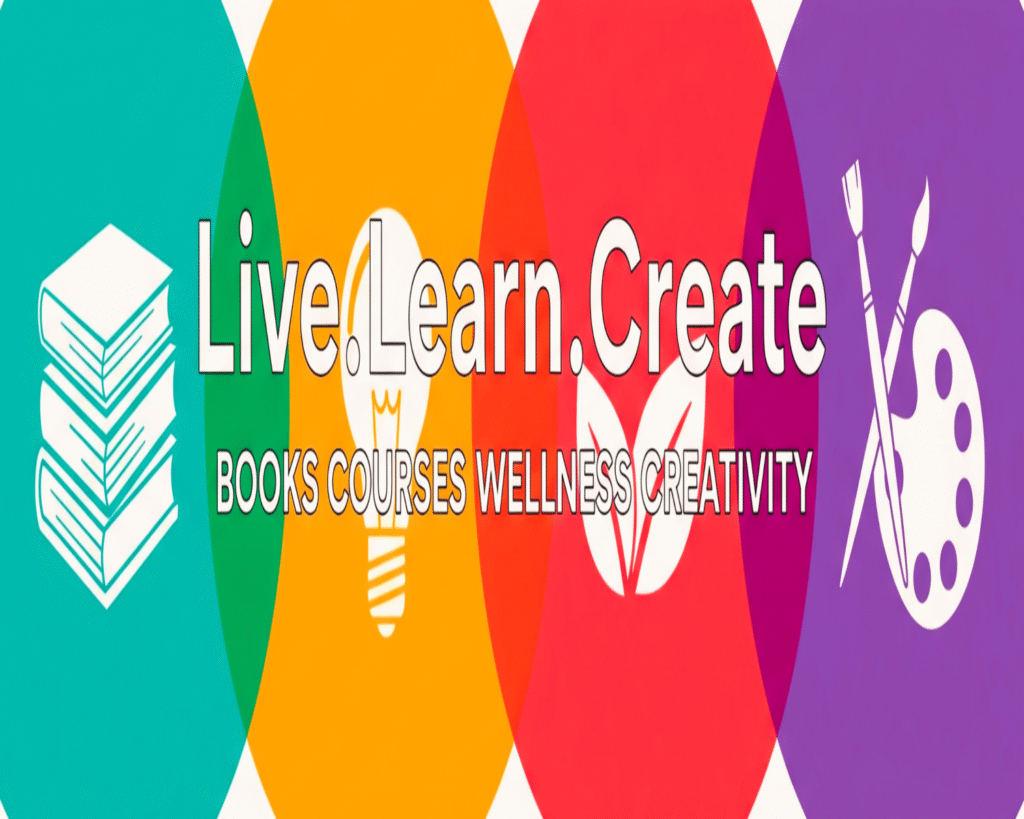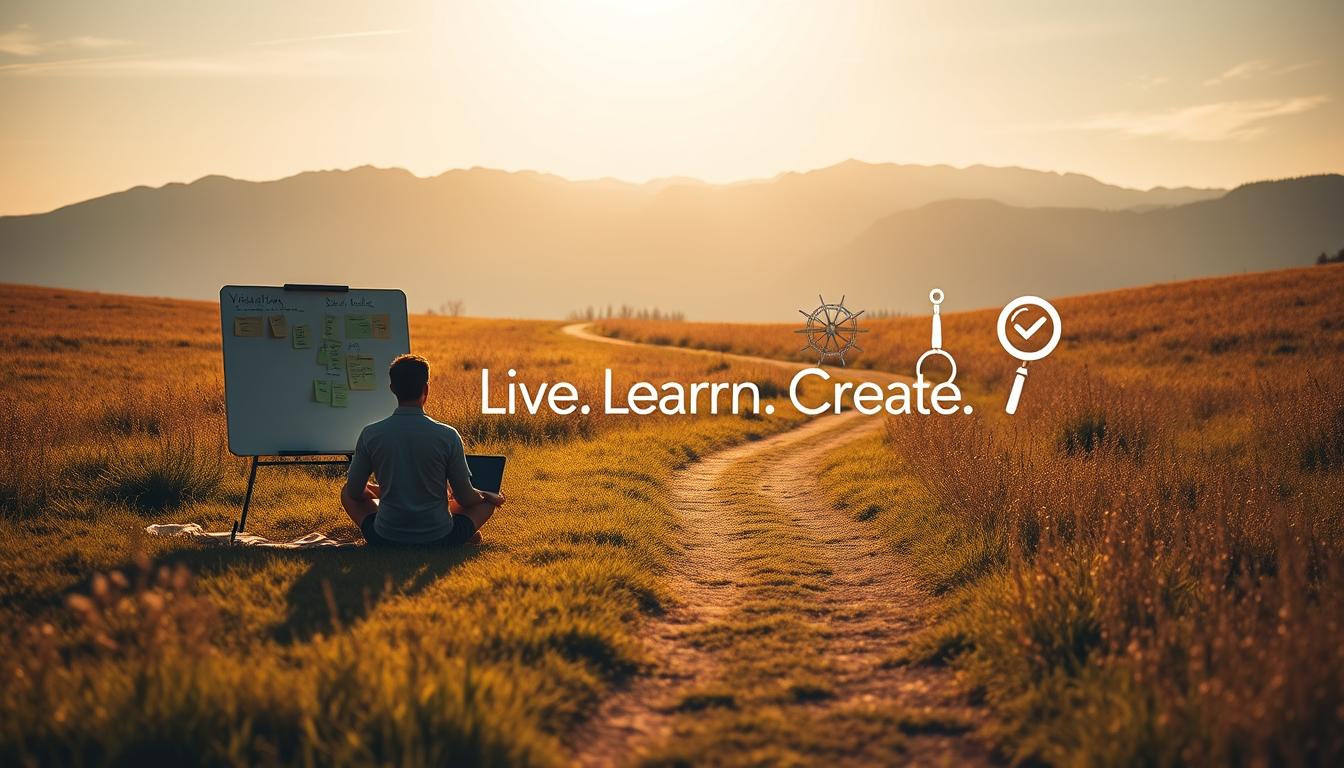“You may not control all the events that happen to you, but you can decide not to be reduced by them” – Maya Angelou’s timeless wisdom perfectly frames our journey today. What if your greatest breakthroughs could emerge from life’s toughest moments?
This isn’t about ignoring challenges or forcing toxic cheerfulness. True strength comes from seeing possibilities within difficulties – a skill we’ll build together. Your mental approach shapes how you experience everything: work challenges, personal relationships, even quiet moments of self-reflection.
We’ll explore how resilient thinking patterns act like muscles – they grow stronger with practice. You’ll learn to spot opportunities where others see dead ends. And no, this doesn’t mean slapping a smile on tough days. It means developing clarity to separate temporary setbacks from your core potential.
Through simple daily practices, you’ll discover how to:
Key Takeaways
- Transform challenges into stepping stones for personal and professional growth
- Balance realistic perspectives with hopeful solutions-focused thinking
- Strengthen emotional resilience through intentional thought patterns
- Improve decision-making by recognizing hidden opportunities
- Build healthier relationships through optimistic engagement
- Cultivate lasting mental habits that support your definition of success
Let’s begin reshaping how you meet life’s twists – not as obstacles, but as invitations to grow. Your journey toward empowered thinking starts here.
Understanding the Impact of a Positive Mindset
Optimism isn’t just a feeling—it’s a neurological superpower. When we explore how hopeful perspectives shape our lives, we uncover fascinating connections between our thoughts, brain chemistry, and daily experiences.
Defining Optimism and Growth
True optimism means seeing potential in problems without denying their difficulty. It’s like training your mind to spot hidden doorways when you encounter walls. This approach strengthens mental flexibility—the ability to adapt while maintaining emotional balance.
Growth occurs when we reframe challenges as feedback rather than failure. Our brains naturally focus on threats, but with practice, we can develop solution-seeking pathways. Think of it as mental muscle-building for resilience.
The Science Behind Positive Thinking
Neuroscientists discovered that hopeful thoughts activate the prefrontal cortex—your brain’s problem-solving center. Simultaneously, they calm the amygdala, reducing stress responses. This dynamic duo releases dopamine and serotonin, chemicals that enhance focus and emotional stability.
Repeated optimistic patterns physically reshape neural networks. One study showed that people practicing gratitude for 8 weeks developed stronger connections in regions linked to emotional regulation. Your past experiences created thinking habits, but you hold the tools to remodel them.
Every conscious choice to focus on possibilities strengthens your brain’s resilience wiring. As these pathways develop, you’ll notice easier access to creative solutions and calmer responses to life’s curveballs. The benefits compound like interest in a savings account for your mental health.
The Role of Positivity in Mental and Physical Health
Your outlook acts as a bridge between thoughts and biological responses. Our brains and bodies communicate constantly—what we dwell on shapes everything from hormone levels to cellular repair. Let’s explore how this connection fuels both emotional balance and physical vitality.

Mental Health Benefits
Hopeful perspectives release endorphins—your body’s natural mood regulators. These chemicals ease anxiety while sharpening mental clarity. Over time, this creates a protective buffer against stress:
- Strengthens emotional flexibility during setbacks
- Reduces rumination on negative experiences
- Enhances problem-solving abilities under pressure
One study found people practicing gratitude had 23% lower cortisol levels. This isn’t about denying pain—it’s building tools to navigate life’s storms without capsizing.
Physical Well-being and Resilience
Optimism doesn’t just lift your spirits—it fortifies your biology. Research reveals striking connections between hopeful thinking and:
- 23% stronger immune response to viruses
- 11% lower risk of heart disease
- Faster recovery times post-surgery
“Women with sunnier dispositions showed 30% reduced mortality rates from major illnesses.”
This happens because calm minds support healthier habits. You naturally crave movement when not battling fatigue from stress. Food becomes fuel rather than comfort. Each choice reinforces the next—a upward spiral of vitality.
Recognizing Key Characteristics of an Optimistic Outlook
True optimism isn’t rose-colored glasses—it’s clear vision through life’s storms. This outlook combines clear-eyed realism with unwavering belief in human potential. Let’s explore two pillars that define this approach.
Acceptance and Resilience
Acceptance means seeing situations as they are—not how we wish they’d be. It’s the foundation for thoughtful action. When we stop fighting reality, we gain energy to create change.
Resilient people don’t deny difficulties. They ask: “What can I learn here?” This shift turns setbacks into stepping stones. Research shows those practicing acceptance recover 40% faster from stress.
The Power of Gratitude
Gratitude rewires our perspective—like sunlight revealing hidden colors. Try this simple practice:
- Name three small joys from your day
- Reflect on one challenge that taught you something
- Acknowledge someone who supported you
Over time, this trains your brain to spot opportunities. One study found daily gratitude journaling increased life satisfaction by 15% in three weeks.
An optimistic outlook isn’t about perfection. It’s choosing to see humanity’s goodness—in others and yourself—even when life feels heavy. This approach builds bridges where others see walls.
Avoiding Toxic Positivity and Embracing Authentic Optimism
Life’s challenges demand more than forced smiles. True emotional strength comes from honoring your feelings while maintaining hope. Let’s explore how to protect your well-being from superficial cheerfulness.

Balancing Realism with Positivity
Toxic positivity acts like emotional spam—it floods your system with hollow reassurances. You might recognize it in phrases like:
- “Just think happy thoughts!” during grief
- “Good vibes only” signs in tense workplaces
- “Everything happens for a reason” after job loss
Authentic optimism creates space for emotions to breathe. It says: “This hurts, and I believe we’ll find solutions.” Research shows people who validate their struggles recover 28% faster than those who suppress feelings.
| Toxic Response | Authentic Approach | Outcome |
|---|---|---|
| “Don’t cry, stay strong” | “Tears show you care deeply” | Emotional release |
| “Just be grateful” | “What’s hard about this?” | Self-awareness |
| “It could be worse” | “This must feel overwhelming” | Validation |
Notice how the third column focuses on growth through acceptance. You’ll discover that balance comes from naming your truth while keeping doors open to solutions. Next time stress hits, try saying: “This feels tough, and I’m learning.”
Your experiences matter—even the messy ones. By honoring them, you build resilience that lasts beyond temporary moods. True optimism isn’t a mask. It’s the courage to face storms while remembering sunshine exists.
Embracing a “positive mindset” for Daily Success
Daily success blooms from small, intentional choices—like watering plants before they wilt. Embracing this approach transforms ordinary moments into stepping stones. Research shows professionals who focus on growth opportunities report 37% higher job satisfaction. Why? They view each interaction as fertile ground for progress.
Start your morning by asking: “What three actions could make today meaningful?” This simple habit shifts your focus from tasks to purpose. You’ll notice:
- Clearer priorities in chaotic schedules
- Improved reactions to unexpected changes
- Stronger connections through engaged listening
One study revealed that people who begin their day with intention maintain better work-life harmony. They’re not chasing perfection—they’re cultivating awareness. Challenges become puzzles to solve rather than threats to avoid.
“High-risk decisions often yield unexpected rewards when approached with curiosity.”
Notice how you frame setbacks. Instead of “This ruined my plans,” try “What’s this teaching me?” This subtle shift activates creative problem-solving. Your career and relationships flourish when you engage through a solution-focused lens.
Success isn’t a distant summit—it’s the way you navigate each hour. Those who thrive long-term treat their days like clay: moldable, adaptable, and full of potential. What shape will your next moment take?
How a Positive Outlook Drives Professional Growth
Your professional journey thrives when fueled by possibility-focused thinking. Let me show you how this approach becomes your secret career accelerator – not through magic, but through measurable shifts in how you engage with challenges.

Enhanced Decision-Making at Work
Confident choices emerge when we trust our capacity to handle outcomes. Professionals who maintain hopeful perspectives make decisions 22% faster than pessimistic peers, according to Harvard Business Review. Why? They view results as feedback, not final judgments.
Consider this comparison of workplace approaches:
| Proactive Choice-Making | Fear-Based Decisions | Career Impact |
|---|---|---|
| Volunteering for stretch assignments | Avoiding new responsibilities | 53% faster promotion rates |
| Collaborative problem-solving | Defensive communication | Stronger team relationships |
| Iterative improvement focus | Perfectionism paralysis | 41% higher productivity |
Notice how the first column reflects solution-oriented behaviors. You’ll naturally attract growth opportunities when colleagues see you as someone who elevates challenges into learning moments.
Leaders radiating authentic optimism create ripple effects. Their teams report 37% higher job satisfaction – not because everything’s perfect, but because challenges get reframed as shared adventures. Next time a complex project arises, try asking: “What skills could this help us develop?”
Your career path accelerates when you combine strategic thinking with belief in collective potential. Those who see possibilities in professional hurdles don’t just climb ladders – they build new ones for others to follow.
Practical Strategies to Cultivate Positivity Every Day
Small daily rituals become the building blocks of lasting change. Let’s explore two evidence-based approaches that reshape how you experience ordinary moments.
Gratitude Journaling and Reflective Practices
Begin each morning with this simple practice: note three specific moments from yesterday that brought quiet joy. Research shows this habit increases neural sensitivity to uplifting experiences by 17% over six weeks.
- What unexpected lesson did today teach me?
- Who enriched my day through their actions?
- Which ordinary object made life easier today?
| Traditional Journaling | Gratitude Focus | Impact |
|---|---|---|
| Records events chronologically | Highlights emotional value | 27% higher life satisfaction |
| Focuses on problem-solving | Builds appreciation muscle | 19% lower stress levels |
| Passive documentation | Active meaning-making | 34% better sleep quality |
Mindfulness and Meditation Techniques
Anchor yourself in the present with this 60-second exercise: Breathe deeply while naming five textures you feel. This mindfulness trick calms racing thoughts 40% faster than suppression attempts.
Even brief meditation sessions create measurable changes:
- 3 minutes: Lowers heart rate variability
- 7 minutes: Enhances focus duration
- 12 minutes: Boosts emotional regulation
Pair these practices like morning coffee and sunrise—one enhances the other. Your journal entries become richer through present-moment awareness, while meditation gains depth from documented growth patterns.
Leveraging Positive Self-Talk and Affirmations for Empowerment
The words we whisper to ourselves shape our reality more than we realize. Like a trusted friend’s advice repeated daily, intentional self-talk rewires how we approach challenges – turning doubt into fuel for progress.
Examples of Daily Affirmations
Start mornings with phrases that align actions with potential: “I choose growth over perfection” or “Challenges reveal my adaptability.” These aren’t empty mantras – neuroscience shows they activate the prefrontal cortex, enhancing decision-making clarity.
Effective affirmations share three traits:
- Present-tense language (“I am capable” not “I will be”)
- Emotional resonance that feels authentic
- Connection to core values rather than outcomes
Building Confidence Through Practice
Consistent self-talk patterns create neural pathways that make optimism feel automatic. When facing tough moments, try bridging statements: “This feels hard – and I’ve handled similar situations before.”
Research reveals people practicing affirmations for 30 days showed 18% increased stress resilience. The secret? Framing abilities as muscles that strengthen with use. Your inner dialogue becomes scaffolding for self-compassion during setbacks.
Tonight, reflect: What phrase would your most supportive self say to you right now? Write it where you’ll see it tomorrow. These small acts of intentional speech become cornerstones of lasting empowerment.
FAQ
How can I stay hopeful during challenging situations?
Focus on small, actionable steps rather than overwhelming outcomes. Tools like gratitude journaling or mindfulness apps like Calm help reframe challenges as temporary. Acknowledge difficult emotions while consciously redirecting energy toward solutions.
What’s the difference between toxic positivity and healthy optimism?
Toxic positivity dismisses genuine struggles with forced cheerfulness (“Just stay happy!”), while authentic optimism acknowledges hardships while nurturing resilience. Brands like Brené Brown’s work emphasize embracing vulnerability as part of growth.
Can affirmations actually improve daily experiences?
Yes—when paired with intentional action. Phrases like “I adapt with courage” (from Tony Robbins’ practices) rewire neural pathways over time. Consistency matters more than complexity; even 2-minute morning affirmations create measurable shifts in self-perception.
How does gratitude impact physical health?
Studies by institutions like Harvard Medical School show gratitude lowers stress hormones like cortisol by 23%, improving sleep quality and immune function. Simple rituals—like noting three daily wins—strengthen mind-body connections.
Can a growth-oriented outlook enhance work performance?
Absolutely. Research from LinkedIn’s Workplace Learning Report reveals professionals who embrace challenges as learning opportunities see 34% faster career advancement. Tools like SMART goal-setting turn optimism into measurable progress.
What if I struggle to maintain resilience during setbacks?
Start with micro-practices: five-minute meditation sessions using Headspace, or reframing one negative thought daily. Psychologist Carol Dweck’s “growth mindset” research shows small, consistent efforts build lasting adaptability over time.
Transform your home into a more peaceful and mindful sanctuary. Creating a Zen-inspired home environment is a core part of the “Live.Learn.Create” theme, focusing on peace, mindfulness, and a clutter-free space. Here is a curated list of Zen home items.
The Zen Essentials
These items are the building blocks of a calm, intentional living space.
- Candles & Scents:
- Scented Candles: Look for calming, natural scents like sandalwood, lavender, white tea, or bergamot. Choose candles made with soy or beeswax for a clean burn.
- Essential Oil Diffusers: A minimalist, sleek diffuser made of bamboo, ceramic, or glass.
- Essential Oil Sets: Look for blends specifically for relaxation, focus, or sleep.
- Incense & Burners: Natural incense sticks (e.g., palo santo, sage) with a simple, elegant burner.
The Zen Decor
This is about incorporating natural elements and simple design.
- Natural Materials:
- Wood or Bamboo Trays: For organizing candles, stones, or other small items.
- Ceramic Vases: Simple, unglazed ceramic vases in neutral colors like white, beige, or gray.
- Minimalist Art: Simple line drawings, abstract prints, or nature-inspired artwork.
- Hand-Carved Stone Coasters: Or other small stone sculptures.
- Textiles:
- Linen or Cotton Throws: A soft, neutral-colored throw blanket to add warmth.
- Jute or Sisal Rugs: These add natural texture and grounding to a space.
- Meditation Cushions (Zafu) & Mats (Zabuton): These provide comfort for meditation and add a serene touch to a room.
The Zen Ambiance
These items help create a peaceful sensory experience.
- Lighting:
- Himalayan Salt Lamps: These provide a warm, soft glow.
- Japanese-style Paper Lanterns: For a soft, diffused light source.
- Dimmable Smart Bulbs: To easily control the warmth and brightness of your lighting.
- Sound:
- Tabletop Water Fountains: The gentle sound of running water is incredibly calming.
- Wind Chimes: Made from natural materials like bamboo or metal for a soft sound.
- Bluetooth Speakers: Small, aesthetically pleasing speakers for playing ambient or meditation music.
- Nature:
- Bonsai Trees or Air Plants: Low-maintenance indoor plants that bring life and a touch of nature indoors.
- Zen Gardens: A small, tabletop sand garden with a rake and stones for a meditative ritual.
- Decorative Rocks & Pebbles: For bowls or as a decorative element.
Best Sellers https://amzn.to/3Vet1tI
New Releases https://amzn.to/4mwLjTi
Amazon Movers & Shakers https://amzn.to/4fPsZlP
Mindfulness Coloring Books https://amzn.to/4fQ0wMx
Personal Growth Coloring Books https://amzn.to/4lJeRf0
Health & Wellness https://amzn.to/4oRt24C
Zen Home Decor https://amzn.to/3VeA3i6
Zen Garden Decor https://amzn.to/4mXjT8D
Zen Garden https://amzn.to/3HQTVVB
- Mindfulness & Meditation:
- Physical Wellness:
- Habit & Productivity Tools:
- Books:
- Best-selling personal development books (Mindset, The 7 Habits of Highly Effective People, The Subtle Art of Not Giving a F*ck)
- Books on a variety of skills (coding, photography, writing.)
- Educational Gadgets:
- Smart pens that digitize notes (e.g., Rocketbook)
- Portable scanners for digitizing documents
- Laptops, tablets, and accessories
Create (Creativity, Innovation, Projects)
These products cater to your creative side, whether you are a artists, writer, or DIY enthusiasts.
- Creative Supplies:
- Adult coloring books or “paint-by-sticker” books
- Craft kits (e.g., candle-making, pottery, embroidery)
- Digital Creation Tools:
- General Inspiration & Making:

























